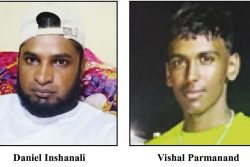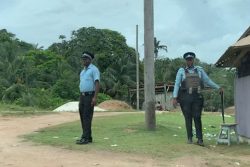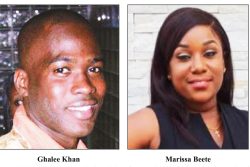AFTER Australia’s lop-sided victories over the West Indies in the two Tests in Dominica and Jamaica earlier this month, a foreboding headline appeared in the Melbourne Age over a piece by its chief sports columnist, Greg Baum.
‘Test cricket: Gone with the Windies’, it read. It reflected doubts in Australia over whether the West Indies would be able to meaningfully compete in their three Tests there in December and January. The concern concentrated on the traditional, back-to-back matches at Australia’s two most iconic grounds.
“All at Cricket Australia are increasingly twitchy about the fact that next summer’s showpiece Boxing Day and New Year’s Test matches are due to be played against the West Indies,” Baum reported.
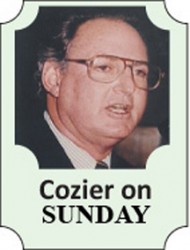 “It will be a most painful return to the scene of past glories for support staff such as (head coach Phil) Simmons, (manager) Richie Richardson and (bowling consultant) Curtly Ambrose, and more pointedly, an event where history and nostalgia will be expected to draw crowds to grounds and television sets when the cricket itself now looks incapable of doing so,” he added.
“It will be a most painful return to the scene of past glories for support staff such as (head coach Phil) Simmons, (manager) Richie Richardson and (bowling consultant) Curtly Ambrose, and more pointedly, an event where history and nostalgia will be expected to draw crowds to grounds and television sets when the cricket itself now looks incapable of doing so,” he added.
Terming New Zealand “the most exciting team in international cricket right now,” following their meteoric rise from below the West Indies three years ago to a World Cup final and a Test ranking of third behind South Africa and Australia, Chris Barrett in the Sydney Morning Herald mooted a switch of the two itineraries.
Even if such a suggestion was considered, it would be impossible under the packed Future Tours Programme (FTP) that lists New Zealand for three earlier Tests, including the first day-night Test match in Adelaide. Yet it was another indication of the West Indies’ present reputation in a country where teams under Frank Worrell, Lloyd and Richards were revered above all others.
On their first 11 trips to Australia from 1930-31 to 1996-97, the West Indies were guaranteed Tests in Melbourne and Sydney; they haven’t had one since 2000-01. It was a series that marked their first 5-0 whitewash; Baum reported on it in the 2002 Wisden.
He would have recalled that the defeats then were just as emphatic as the most recent, none more so than in the Boxing Day Test at the MCG where they scraped together totals of 165 and 109, losing by 352 runs. The margins in Dominica and Jamaica were nine wickets and 277 runs. There was no lack of experience in that team as there clearly was in this; it included Brian Lara, Jimmy Adams, Wavell Hinds and Courtney Walsh. Top scores in each innings were 60 not out and 46 by the one first-timer, 19-year-old Marlon Samuels.
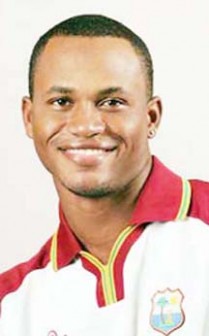
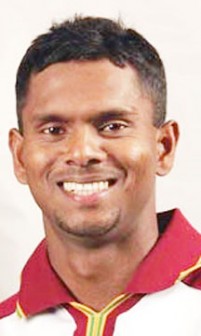
That is how long the drought has lasted. Every now and again, a sprout springs from an encouraging shower but it has always been fleeting. So it was after the promise of new, young talent that earned a hard-fought share of the home series against England prior to the two Australia Tests.
As they flounder near the bottom in Test and ODI rankings, their once fanatical support has drastically diminished. Stands that everywhere heaved with their devotees at the height of their powers are now occupied by a sprinkling of diehards.
Apart from the results (a win-loss-draw record of 30-80-44 since 2000), there has been a telling absence of 20-something stars to excite optimism. While Joe Root has flourished for England, Kane Williamson for New Zealand, Steve Smith for Australia, Virat Kohli for India, Darren Bravo has faded after a start that appeared to validate Steve Waugh’s initial predication that the stylish left-hander, Brian Lara’s cousin and clone, was “world cricket’s next superstar, no doubt”.
The new selection panel, under Clive Lloyd, has deliberately focused on youth; Lloyd is adamant that he and his colleagues will stick to the policy. He has appealed for patience from followers; it is easier said than done.
The decision to omit 40-year-old Shivnarine Chanderpaul, the one dependable batsman throughout the difficult times, after a career spanning 21 years and introduce three newcomers for the Australia Tests was widely questioned, not least by the WICB hierarchy.
In the interim, enthusiasm for the game has been sustained by the introduction of the T20 Caribbean Premier League (CPL), a replica of the flagship Indian Premier League (IPL) and the latest of the many such global short-format tournaments.
Traditionalists dismiss it as nothing more than entertainment irrelevant to the development of real cricketers yet it has caught the imagination of an otherwise disenchanted public. Without it, it is not far-fetched to accept the Melbourne Age’s ‘Test cricket: Gone with the Windies’ assertion as not far from the mark.
The CPL was licensed by the WICB in 2013 to operate the private, professional league. As such, its owners, the giant mobile phone company, Digicel, is not encumbered by the peculiar problems that confront a board comprising stakeholders from the dozen politically independent territories scattered across the Caribbean Sea.
Its third season started last night at Kensington Oval; seats were filled well before the first ball of a match between last year’s finalists, the Barbados Tridents and the Guyana Amazon Warriors.
It was, once more, a typically electric Caribbean party under the floodlights. St.Lucia, St.Kitts, Guyana, Trinidad and Jamaica are later venues for matches that culminate in the final at Port-of-Spain’s Queen’s Park Oval on July 26.
The West Indian superstars of the IPL are again interspersed through the six franchise teams – the Tridents, the Amazon Warriors, the Jamaica Tallawahs, the first-timers, St.Kitts and Nevis Patriots, the St.Lucia Zouks and the Trinidad and Tobago Red Steel. It is the only chance for home fans to see them in action as they no longer participate in WICB tournaments.
Each team contains four high-profile overseas players; Jacques Kallis appears for the first time with the Red Steel, Kevin Pietersen remains with the Zouks, Mahela Jayawardene is with Chris Gayle’s Tallawahs, Shahid Afridi with St.Kitts and Nevis Patriots.
The beneficial experience of young Indians in the IPL is the same for fledgling West Indians sharing hotels, changing rooms and responsibilities with their celebrated teammates and gaining cricket knowledge.
The IPL influence is strong. Motor company Hero has become title sponsors; Bollywood screen idol and Kolkata Knight Riders owner Shah Rukh Khan has bought into the Trinidad& Tobago franchise; Hollywood stars Mark Wahlberg, with the Talawahs, and Gerard Butler, the Barbados Tridents, were already involved.
There is another side to the story. While West Indies continue to languish near the bottom of the ICC’s Test and ODI rankings, they are fourth on the T20 list.
Their triumph in the 2012 ICC T20 was their first in an ICC event since the 2004 Champions Trophy in England. Providing all their top T20 players are available and selected, they will start as one of the favourites for the 2016 tournament in India.
It is success their devotees yearn for in all formats. At present, that seems some way off.





